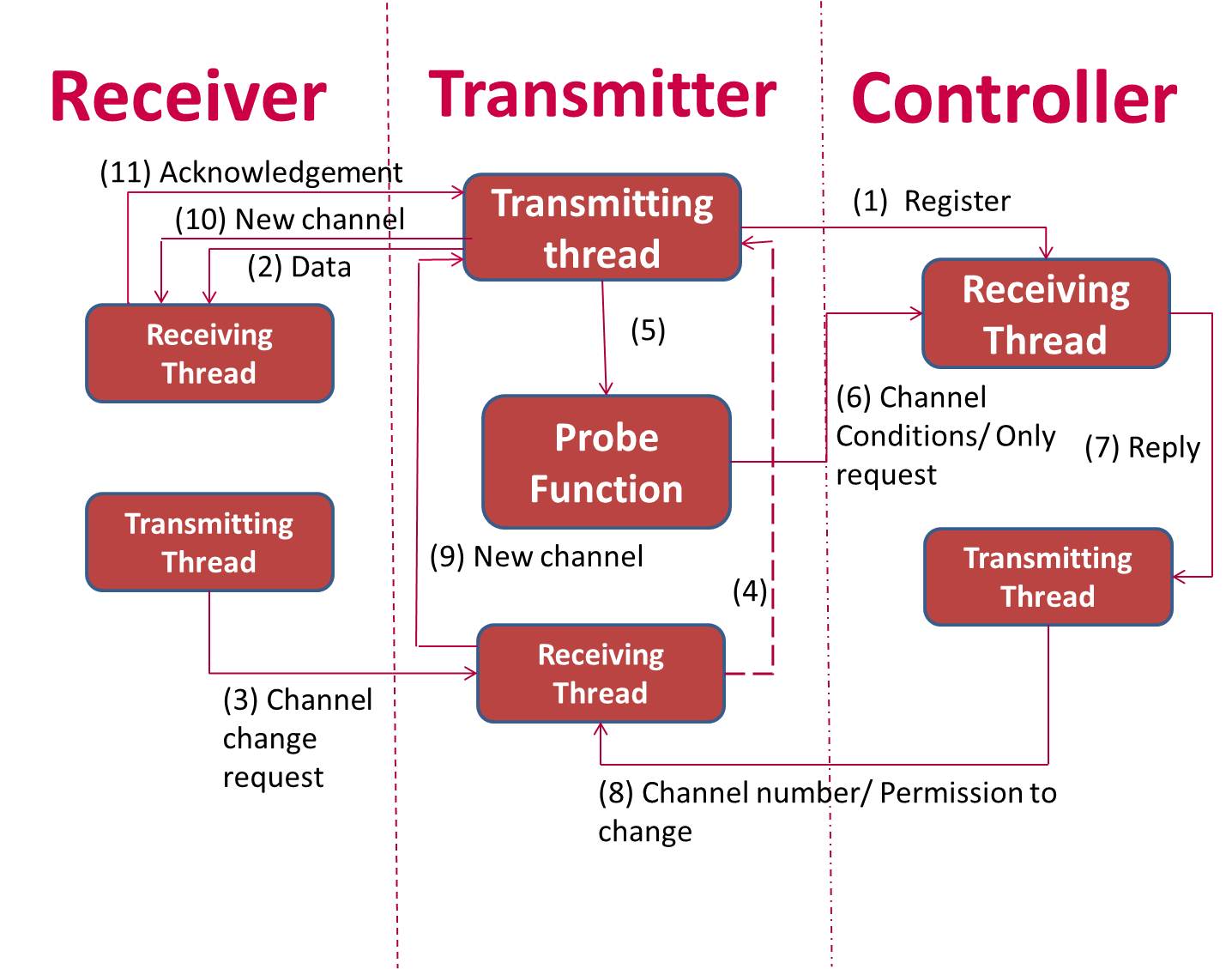Centralized Channel Allocation Scheme
The centralized scheme has a Central Controller which makes the channel allocation decisions for all the working links in the system unlike distributed system in which link themselves decide new channel when they need one. The flowchart for centralized system is shown in the diagram below:

Working:
(1) All the transmitters register the channel numbers that they work on to the central controller. This helps the controller to keep track of which channels are being used. (2) When the data transmission starts on the default link, the receiving device monitors the quality of received packets. (3) If the quality drops below a pre-decided threshold, the receiver indicates to the transmitting device to switch to another channel better suiting its requirements. (4) The receiving thread of the transmitting device now lets the transmitting thread know that it needs to probe channels in order to get a new channel. (5) The transmitter now sends probe packets on all the available channels and waits for the replies from the other receivers in the system working on those particular channels. When the transmitter receives those replies, it records the RSSI (Received Signal Strength Indicator) for each channel. (6) These values are communicated to the Centralized Controller. (7) The Controller makes an intelligent channel selection based on channel occupancy and channel quality as informed by the transmitter. The controller also makes sure that the time difference between two consecutive replies to channel change requests is sufficient in order to avoid the continuous channel changes. If enough time has not passed when it gets a second request after one then it waits for that much time before sending the reply. (8) The selected channel is now sent back to the transmitter’s receiving thread. (9) Receiving thread of the transmitter now informs the transmitting thread regarding the new channel. (10) Transmitter sends the new channel information to the receiver. (11) After getting the acknowledgement from the receiver device, both transmitter and receiver switch to the new channel and data transmission starts again.
Advantages:
(1) Centralized controller system avoids thrashing which is caused due to continuous channel changes (for more explanation on thrashing refer to the Distributed Scheme) by keeping pre-decided timeouts between consecutive channel change replies. (2) Along with the channel conditions, the controller also takes into consideration the channel occupancy.
Example: Transmitter sends following data to the controller Channel 0: rssi = 60, state = busy Channel 1: rssi = 45, state = free Channel 2: rssi = 40, state = free Controller, in this scenario, will select Channel 1 in spite of Channel 0 having the highest RSSI as it finds out that it is already busy which is different than the distributed and hybrid schemes. Both of those will select Channel 0 as in those the transmitter decides the best channel itself.
(3) The controller has the overview of the system.
Disadvantages:
(1) If there is only one controller in the system then it becomes the single point of failure as all channel change decisions are made by the controller. This can be solved by using a distributed system of controllers with total ordering between them regarding the channel allocation decisions. (2) Even with one controller there is lot of data transfer between the transmitter and the controller as the packets contain all the parameters for channel conditions. This problem increases if multiple controllers are used.